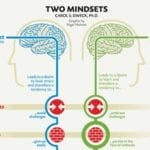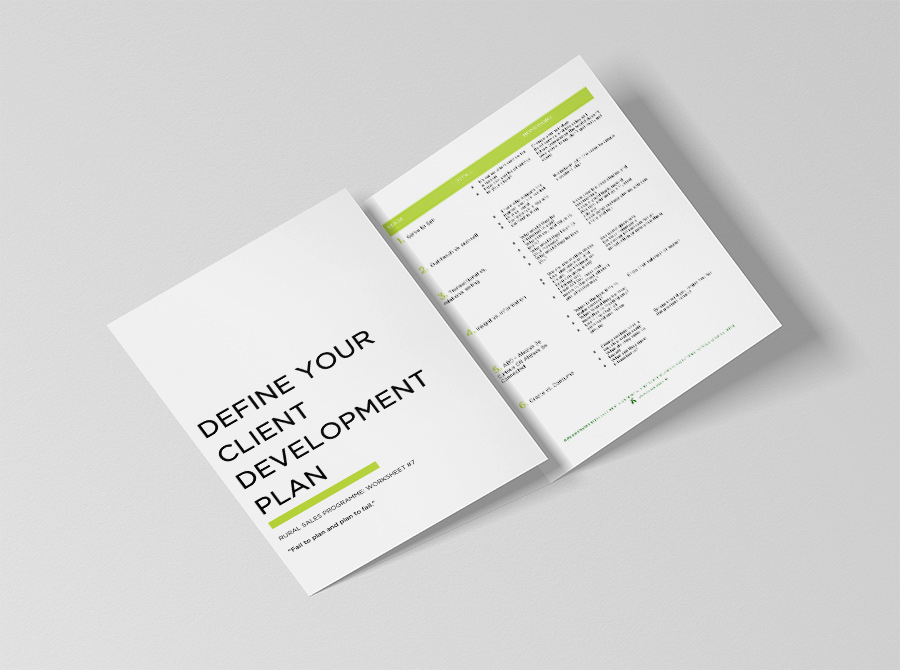Why Your Content Is Crap (And 7 STeps to Help You Fix It Fast)
There’s a lot of crap content out there. My LinkedIn feed alone is full of self-promoting “look what we won” or “look what we did” humble brag types who should know better. Content like this clogs the channel and encourages your followers to unfollow you.
99% of content is created without any thought about the audience or customer they are trying to serve. More often than not, content has been written or commissioned by a company that is most interested in serving their own interests, rather than the ones of their customers. No wonder their content isn’t connecting.
With the volume of content only set to increase, and the assumption people will get better at their craft, getting your content to cut through and connect with customers is only going to become harder, not easier.
If you don’t think content is a valuable business strategy for growing revenue you are very wrong and must have been living under a rock.
Let’s look at Netflix. It commissions $US6bn of its own content each year compared to the $US2bn of its nearest competitor HBO. Netflix is now available in 130 countries and its share price quadrupled over the last three years. After its 2002 IPO its share price has gained over 8000%. This means for every $1,000 you invested in them you’d have $81,000 now. Not a bad return huh?
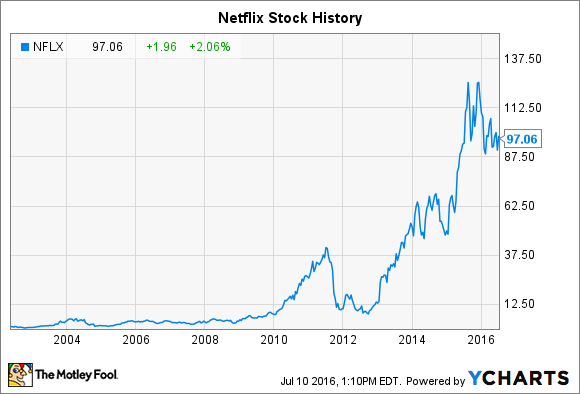
It’s become so successful that its CEO Reed Hastings claims Netflix’s biggest competitor is sleep!
Netflix is a content-based business and it is KILLING it.
You should be a content-based business too if you want to be more successful and profit like Netflix does. If you’re still not convinced consider YouTube and Facebook. They do a pretty good job on content too. Have you spotted the correlation yet (hint: it’s content-based)?
People will always be hungry for information that helps with their specific problem. Notice the deliberate use of the word specific (italicised and then bolded for those of you who might have missed it :). The majority of today’s content is created without any consideration into what your ideal customer is looking for. Your generic content won’t work because it is being largely ignored. Why? Because it doesn’t talk to the customers you want about their current motivations and drivers. It’s not worthy of their attention, a currency in very short supply in our hyper-connected, distracted world.
Despite these facts, you keep creating content that no one reads. You might as well be talking to yourself. Yet some of you continue to persevere without any strategy on how you can improve your content and make it more effective and engaging. Instead you carry on, throwing good money after bad.
The problem is you haven’t done your home work.
You’ve just made some assumptions, put up some content hoping people would engage with it. How’s that “hope as a strategy” going for you?
Customers crave content when it’s highly relevant and useful to them solving a specific problem they are experiencing at that moment in time. Like the time I had a blocked sink before my Mother In Law arrived. You can bet I was Googling hard out “How to unblock a sink” and clicked in desperation on a YouTube How To video. Solution found and problem solved. I had a very real need that was a specific problem for me (the other problem was avoiding the pain of an after hours plumbers bill). I needed solving my problem then and there and the content I found enabled me to do that.
Many of you will be investing in producing or commissioning content that doesn’t connect. Most of this investment it’s wasted. You might as well burn the cash instead.
Stop doing this. Get off the hamster wheel and then ask yourself:
- Is our content marketing investment working for us? How do we know?
- How are we measuring its impact to the business outcomes we need?
- Are we getting sign ups, subscribers or sales? Did we set some targets?
- What’s our motivation for producing or commissioning content? Is it meeting those expectations?
Most of you will be getting what we call in the trade: “vanity metrics”. These are likes and comments from friends, family and staff. A bit like inviting Mum to your school play audition. At least that way you’re guaranteed you have one enthusiastic supporter.
For most of you, you’re wasting valuable sums of hard-earnt budget creating content that your customers don’t read.
This is expensive and painful problem because whilst you’re doing it wrong, your competitors are doing it right, getting the deals and leads you’re not.
Netflix’s huge growth and success has allowed it to invest in creating an even more dependable business model that produces better, higher quality content.
That’s what good profits allow.
The money Netflix makes means it can create a wider moat around itself that separates itself further away from its competition. Or like a flywheel that gains more momentum as it adds more high quality content that subscribing customer’s keep coming back for.
You can do the same with the right will and discipline if you commit to learning how to implement well-researched, effective content strategy that serves a specific audience’s need.
WHAT BENEFITS DO YOU GET WHEN YOU CREATE GREAT CONTENT?
Loads. When you consistently create great content that connects and cuts through, it provides your business with a MASSIVE number of benefits:
- it positions you as an expert in your field (assuming you have defined your specific niche)
- it alerts you to media and conference speaking opportunities
- it allows you to employ a strategy of “out-teach to out-sell”
- it qualifies your prospects more effectively
- it generates quality inbound lead traffic through
- it doesn’t have to be geographic (you can blog/podcast/video from anywhere)
- it works whilst you sleep
- it travels across countries and timezones
- it uses the power of reciprocation (you get valuable customer contact details in exchange for valuable content)
- it allows you to get better SEO ranking (Google will index your pages and rank your website higher)
- it works to connect you with a new network of fellow-minded thinkers and followers you wouldn’t have otherwise found
- it uses 1:Many instead of 1:1 (the amplifier effect, the better the content the more it gets shared)
This list isn’t exhaustive. There are many more here but you get the idea.
Content helps makes you money so let’s start off by defining what good content it and what it isn’t.
WHAT MAKES GREAT CONTENT?
Content means different things to different people. For most it means having a business page Facebook and posting. Wrong.
In today’s noisy, information saturated world where we’re constantly competing for ears and eyeballs, your content doesn’t just need to be good, it needs to be great. Great content is the content that gets read, shared and commented on.
If you’re not getting any real engagement from your content it is telling you very clearly that your content isn’t valuable or useful enough for your market to pay attention to. In today’s world, attention is a finite resource:
“Attention is the rarest and purest form of generosity,” Simone Weil
Here’s a simple table to help you tell the difference between good and not so good content:
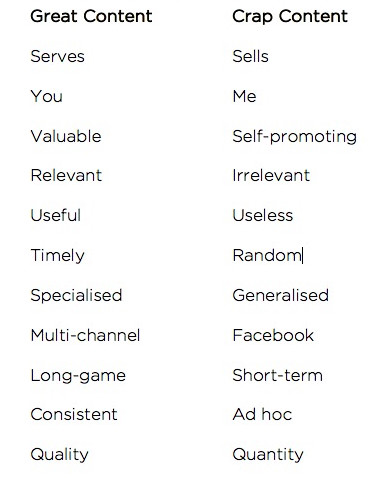
IN ORDER TO SELL, YOU MUST SERVE FIRST.
Content is one of the best proven strategies you can use to achieve this.
You need to give before you can take. A bit like dating.
If you take without giving something valuable first, you won’t get far in any relationship. Professor Robert Cialdini reminds us in his brilliant book Influence that the power of reciprocation is one powerful influencer. Use reciprocation to your advantage.
The great marketing prophet that is Seth Godin argues content has to be Personal, Relevant and Anticipated. The anticipation part is an important qualifier because if it’s both personal and relevant, then it will always be anticipated (or what I call craved for).
SO HOW DO YOU CREATE GREAT CONTENT THAT CUSTOMERS CRAVE?
Content has to be relevant, timely and useful or you’re shooting in the dark hitting a target you don’t know or can’t see. You’ll deplete a lot of ammunition that way.
In business terms, your ammunition is the finite resources you have at your disposal: time, money and energy. Because they aren’t limitless, you need to be invest these resources wisely.
If you keep trying and not hitting your target, it gets expensive and frustrating. It also leaves you in a weaker, more vulnerable position with less resources to compete or defend against competitor moves.
Take Sky TV or the NZ media newsrooms. Resource depletion is rampant and when that happens you have less options to play with. That’s why both companies are so desperate for mergers. Learn from them.
The key to creating great content is doing your homework and research first:
- Who are we targeting?
- Why are we targeting them?
- What’s the benefit and value of them reading, sharing or commenting on our content?
- What specific pain, anxiety or frustration are they experiencing?
- What inner dialogues are they having with themselves?
- What language, words or phrases are they using?
- What are they continually thinking about and searching to find answers for?
- How could we help them with the specific problem they’re currently experiencing?
These aren’t hard questions to think of. They are quite basic yet the irony is so few of you ask them.
“CONTENT IS KING AND CONSISTENCY IS KEY”
Content is king is a very valid catch cry and one me and my business live by (that’s why I commit so much time writing blogs and sharing content that I hope helps people).
However great content has to be consistent too.
Hollywood constantly produces content so they can sell more distribution rights. TV producers consistently make new series and shows so they can sell more rights to more TV networks.
You need to be constantly and consistently creating quality content.
CONSISTENCY WILL BEAT INTENSITY EVERY TIME
If you create content, you must be disciplined which allows you to be consistent. No one likes one-hit wonders. Stay the course and commit to creating great content. Resource it like you mean it (and if you can’t you can always outsource it to people like us).
So what content are your customers craving? Have you asked them or did you make the decision for them? Here are 7 ideas to help you.
7 STEPS TO CREATING CONTENT THAT CONNECTS
STEP #1: WHAT IS YOUR NICHE YOU WANT TO SERVE?
You cannot be all things to all people. In order to own a market, you need to know a market. Preferably a market you come from as a person that makes you a more credible and trusted “insider”.
You need to be the cardiologist, not the GP.
GPs are generalists who sometimes have to guess because their training is based on general knowledge, not specialist knowledge in one dedicated field. Be the referred specialist instead. Preferably the one with the long waiting list.
Ask yourself:
- How can you serve your specific customer audience?
- What specific painful or expensive problems are they most motivated in solving?
- Who has the greatest need for your product or service?
- What are their biggest motivations, fears and pain?
- What are they looking for most?
- Where are they looking?
- What pain are they experiencing that they want to avoid?
STEP #2: WHAT ARE YOUR CUSTOMERS SEARCHING FOR SPECIFICALLY?
Google Search Console and SEM Rush are both great tools to see what keywords people are searching for. You can find out the volume of searches across different competitor sites too.
Create content that talks to them like you’re talking to them in person. It speaks to them. Use the words “you” and “your” (look out for this next time you read a great piece of content or book). Great writers build a relationship with the reader. Get personal and in touch with how they’re feeling and experiencing the world right now. Show that you get their world view and empathise with them so they understand you understand.
(tip: use long key word searches help as people are increasingly using them to answer specific problems they have eg. “Why is my MW511 Fisher & Paykel Washing Machine not draining”)
STEP #3: WHAT SPECIFIC PROBLEM ARE THEY TRYING TO SOLVE?
The key word here is specific. You cannot create content for everyone. If you try, you’ll die in the process. You need to create content for someone specific. Talk to that someone as if you’re taking to them 1:1 as an individual or friend. Create content as if when they’re reading it they feel like you created it just for them.
For instance, a prospect might be googling “how to get my sales team using CRM”. They have specific and current need that they need to solve. They are already motivated and activated so your content needs to talk to them in real time about what pain or frustrations they are living and experiencing at that moment. eg. “Hitting your head against a brick wall trying to get your reps to do their CRM?”
STEP #4: CREATE A GREAT HEADLINE THAT CAPTURES YOUR CUSTOMER’S NEED
“90c of your advertising dollar is spent in your headline” – David Ogilvy
Writing good headlines is an art form. Same for email subject lines. You have to capture the personal benefit within your headline or you lose your audience.
- Does it talk to them?
- Does it show them you understand where they are at?
- Does it offer a benefit?
- Is it personal?
- Is it believable?
People will judge the quality of your content by the quality of the headline they first. Make sure it’s a good one. It’s your first impression and you get one chance so make it count.
STEP #5: GET EMOTIONAL
People buy based on their emotions and justify rationally. This is a known fact (google it if you don’t believe me). We are driven by our powerful subconscious even if we don’t know it which dates back to our cave man days when survival and status where all that mattered. Our brains, although in different times now, are still wired that way.
In order to connect with your customers, you need to tap into their emotions because emotions drive their motivations. As well as this you need to write as if you’re talking to them 1:1, like you would with a best friend. Don’t use fancy words or jargon. Write like you would speak to make a deeper connection with your reader.
STEP #6: GET WRITING YOUR F UGLY DRAFT
This is where most people struggle most. I can sympathise as I have about 30 f-ugly drafts siting in my Notes section right now that are too intimidating and overwhelming to look at.
Writing content is hard. My advice?
Start writing because it ain’t going to write itself. The reason we hold back on writing is that our brains tell us that it has to be perfect. It does’t have to be perfect. Only practice makes perfect so the more you write, the better you’ll get.
Give it the overnight test. Print it out and read it again. Grade it and grade it again till you’re 80% happy with it. You can get someone else you know and trust to read it too.
STEP #7: PUBLISH 80/20
Sure your content can always be better but go with the 80/20 rule. You can always edit it once it’s up. Speed to market and implementation is key if you want to get continue tout there that others might be thinking of but haven’t published yet.
Hit the publish button even if it scares you (if it does scare you definitely press Publish). Don’t delay. Get on with it and publish your content today.
CONTENT DOES NOT = COMPLIANCE
I know as you’re reading this article you’re thinking to yourself “this guy’s right, we really need to get some posts and blogs out there ASAP.” If you think you do, you probably do. Just don’t do it just because you feel you need to comply.
Content is not about complying. It’s about connecting. What content can you create that truly connect with your customer?
So many clients we inherit at Agrarian blame the channel when it has nothing to do with. More often that not, it has everything to do with the quality of your content and nothing to do with the channel. The channel is the easy bit as there’s already great infrastructure built for you to use and promote (WordPress blog, MailChimp, Facebook, YouTube, SoundCloud). The hardest stuff is the content stuff.
Here are some ideas and themes that can help inspire you to create great content:
- taboo (post something controversial, “There is only one thing in life worse than being talked about, and that is not being talked about.” – Oscar Wilde)
- mystery (this is why so many TV shows are mystery-based, leave something out or incomplete so your readers tune in for more)
- surprises (how can you surprise and delight people with your content?)
- new discoveries
- anger (anger is a very powerful and motivating emotion, use it carefully)
- hilarious
- secrets
- remarkable (just like a sunny day in Wellington, sorry Wellingtonians just kidding!)
- outrageousness (I feel outraged also means you’ve made a connection. Well done)
You need to push your customer’s buttons. You need to pique their curiousity. You can do this one of many ways:
- shock them
- surprise them
- jolt them
- move them
Humans are curious creatures. We are wired to make sense of the world around us to keep us safe and pass our genes on. Literally. By tapping into their emotions and offering something different, we catch their interest and talk to their powerful and influential subconscious minds.
We need to arouse customer interest. When people are in a state of arousal they will continually search for what they need until it is satisfied. Think about when you’re hungry and skipped lunch and it’s 4pm on a max’d out Monday. You need food and you need it NOW! You will do anything to crave your hunger and suppress it. It’s distracting you and you’re not feeling like you can function without it. Same for coffee. People crave coffee (my wife doesn’t talk to me until she’s had her cup of coffee first thing). If they don’t get it, they get very irritable. It’s like an addiction.
How can you, in a constructive way, make your customers become addicted to your content?
You give them the good stuff.
Stuff they can use to show others how smart they are (what Jonah Berger calls “social currency”) or content that puts them in a positive light (due to conformity bias many of us, despite our rebuttals, care greatly about what others think of us).
Perhaps you can move them like this great ad I saw made for 50 quid that’s rivalled this year’s Elton John John Lewis Christmas ad with 6million views on Facebook.
Or this horse who visits sick people in a hospice who are dying. I challenge you if either of these two pieces of content doesn’t move you to tears.
When you create great content you enhance the channel. When you create crap content you pollute the channel.
Be more of the former and less of the latter.
CREATE INSTEAD OF CONSUME
I’ve said this before but I’ll say it again: it’s too easy to hit the like button or share and move on. The problem with that is you’re signalling to people you don’t have any content of your own (you know who you are :).
People are consumers so you want them to consume your content, rather than content from others. That way they will be more open and receptive to your product or service. They are hungry for information and you can be the provider of that information if you know what’s driving that search. They are searching for solutions to their current problems.
WHAT ARE SOME SPECIFIC RURAL CONTENT CHANNEL STRATEGIES?
You need to think wider than Facebook. Content comes in many different forms and channels. How about the following 19 content channels:
- Farmer roadshows/wool shed meetings
- On-farm field days
- Discussion groups
- Webinars
- Affiliate marketing (using partner channels)
- Workshops
- Events
- Conference speaking
- E-books
- White papers
- Email campaigns
- Email newsletters
- Website
- Blogs
- YouTube channel
- Podcasts (or guest podcasts)
- Seminars
- Media articles/commentary
YOUR CONTENT STRATEGY STOOL
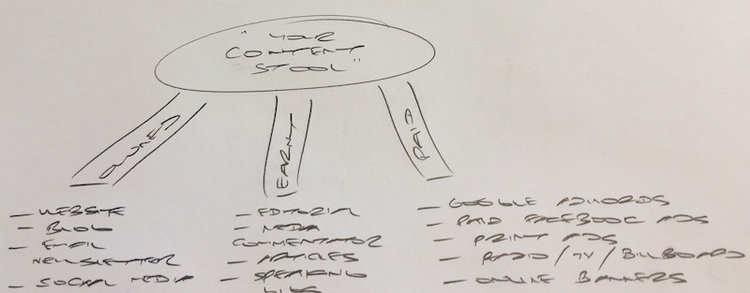
Your content stool should have a minimum of 3 legs: Owned, Earnt and Paid Media (apologies for my crude drawing and illegible handwriting, I blame it from being from a family of Doctors).
Having a 5 legged stool is probably your best bet because it reduces the risk of you being ignored. 3 legs won’t cut it because as soon as you kick 1 leg off the stool will fall. When you have 5 legs and you remove 1 or 2 legs, your stool still stands.
WHAT 5 LEGS COULD YOU CREATE FOR YOUR CONTENT MARKETING STRATEGY?
Look back at the list of 19 channel ideas I gave you above.
The additional benefit of using a diversified Content Strategy Stool like this is that all your customers and prospects consume content in different ways. This means your content straddles across many different channels allowing you to cover more bases.
Some people like to read online and some will like to hear it in person. Others prefer to see things with their own eyes. Some people don’t like voicemail and prefer a text or SMS instead. If you know their communication preferences you can segment your customers and make sure you use their preferred channel(s) so you get a greater chance of connecting with them.
I hope you find this content useful and valuable in helping you create more effective content that connects and content your customers crave.
Good luck.
+++
ps: I hope this was useful and valuable content for you. If it was, please help by Sharing this article amongst your network so they can get the same value.
My mission is to champion life-long learning among rural business owners using education-based sales and marketing content that teaches them and their teams how to remain relevant and be more productive and profitable.




